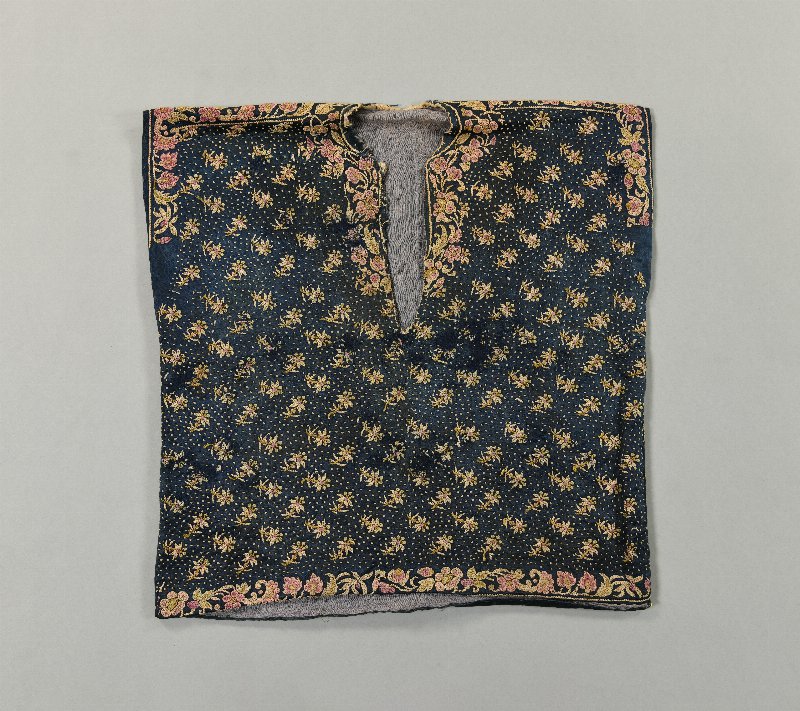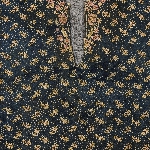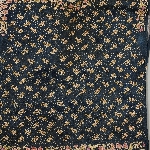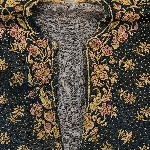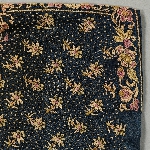| Native Name | Jhabla |
| Object Number | 43-12-100 |
| Current Location | Collections Storage |
| Culture | Indian | Parsi |
| Provenience | India | Gujarat |
| Period | 19th Century |
| Date Made | Late 19th Century |
| Section | Asian |
| Materials | Silk | Cotton |
| Technique | Embroidered | Dyed | Woven | Sewn |
| Iconography | Floral |
| Description | An embroidered silk satin tunic for a Parsi child (Gujarati: jhabla) lined with grey cotton gauze. Field design of small floral sprigs in diagonal lines; the same motif is repeated but the orientation alternates, tilting up to the right then down to the right. Small knots sparsely fill the remaining space. The mulberry silk satin in very dark blue (nearly black) and the allover embroidery worked completely in knots (seed stitches; Gujarati: khako) in floss silk identifies the jhabla as likely embroidered in China or by Chinese embroiderers in Surat, Gujarat. The Parsi market for Chinese embroideries emerged from the involvement of Parsi merchants in the so-called 'China trade' of Indian opium and cotton for Chinese tea exported to Britain in the 19th century. The flowing arrangement of the floral border design draws from Chinese embroidery motifs, distinguishing the design from the more regularized repeats of the floral borders commonly found on embroideries produced in Gujarat for domestic markets during this period (compare with object number 43-12-60. Other Penn Museum objects for the Parsi market: A574, A613, and 43-12-101. Blue with smaller flowers in green, beige and pink. Blue edging. Light purple lining. |
| Length | 38 cm |
| Width | 37 cm |
| Credit Line | Bequest of Mrs. Frances E. (Harry) Markoe, 1943 |
Report problems and issues to digitalmedia@pennmuseum.org.


